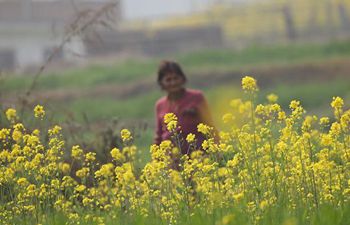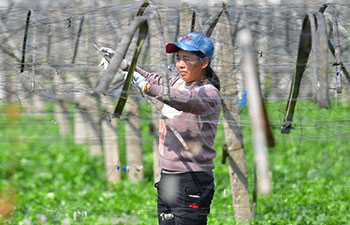ADDIS ABABA, Feb. 18 (Xinhua) -- Widespread desert locust infestations and a new generation of breeding has continued threatening food security and livelihoods in the region as the situation remains "extremely alarming" in Kenya, Ethiopia and Somalia, the United Nations Food and Agriculture Organization (FAO) has warned.
"The situation remains extremely alarming in Kenya, Ethiopia and Somalia where widespread Desert Locust infestations and a new generation of breeding threaten food security and livelihoods in the region. The situation is less worrisome in Uganda and Tanzania," the FAO said in its desert locust outbreak update issued late Tuesday.
In Ethiopia, Ground and aerial control operations continue against mature swarms, the FAO said, adding that cross-border swarm movements with Kenya continue to be reported. Breeding is underway but more details are awaited concerning its scale and geographical spread.
According to the FAO, swarms continue to mature and lay eggs in northern and central counties where hatching and band formation are increasing in Kenya.
"At least one swarm arrived in a tea plantation in the southwest county of Kericho while other swarms have been seen further north in Kenya's Turkana county. There have been no new reports of swarms near Mt. Kilimanjaro. Aerial and ground control operations continue in most areas," the statement read.
While in Somalia, breeding is in progress in central areas near the Ethiopian border. Breeding is also underway in the northeast where late hopper bands were seen earlier in the month near Garowe, it was noted.
The FAO also noted that several mature swarms moved northwards within 12 northeastern districts from February 9-13 in Uganda.
It also noted that breeding is in progress along both sides of the Red Sea in Egypt, Sudan, and Eritrea where hopper groups, bands immature adults groups have formed that is likely to cause swarms to form shortly.
According to the United Nations, the desert locust (Schistocerca gregaria), which is considered as the most dangerous of the nearly one dozen species of locusts, is a major food security peril in desert areas across 20 countries, stretching from west Africa all the way to India, covering nearly 16 million square kilometers.













